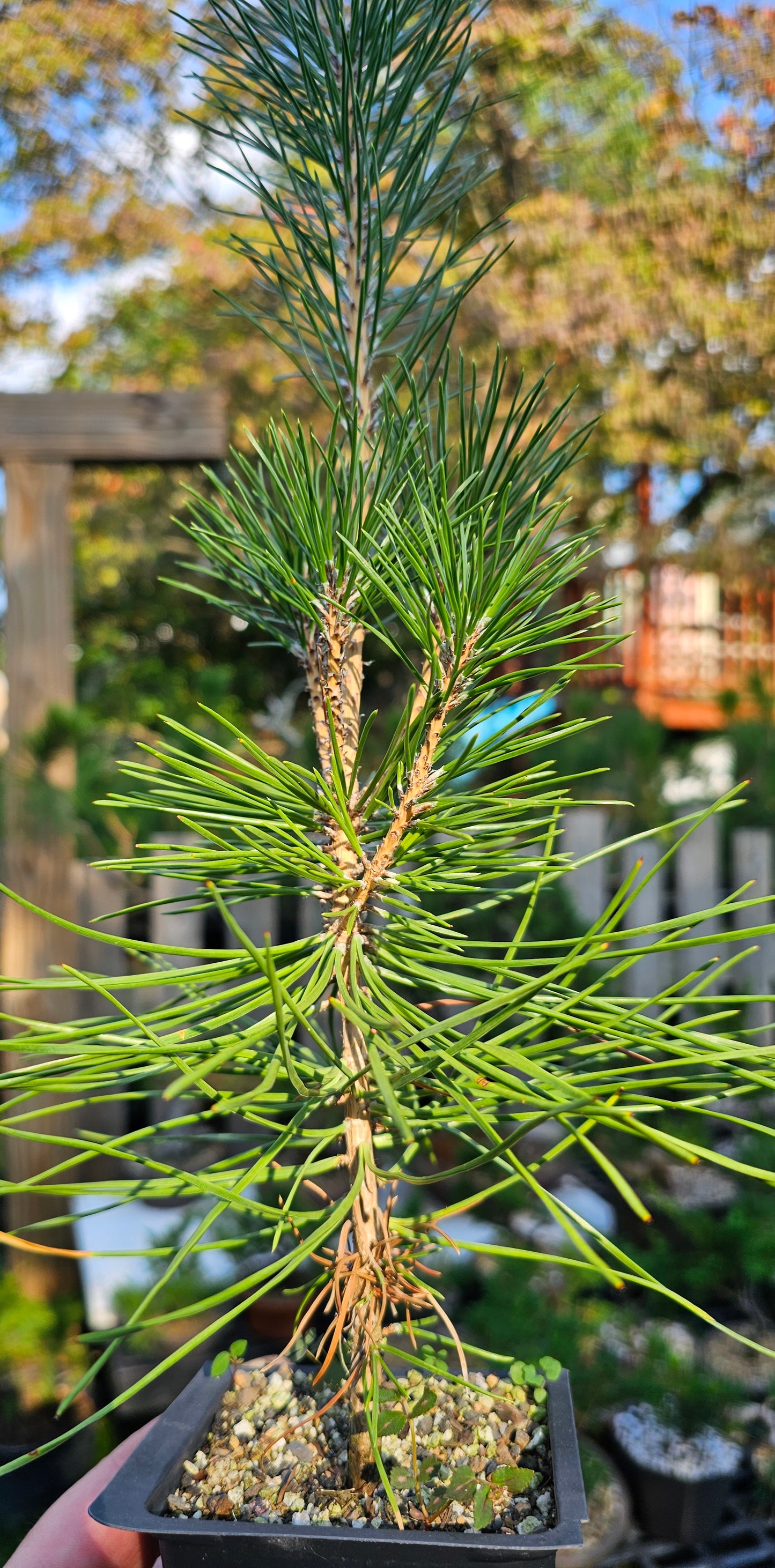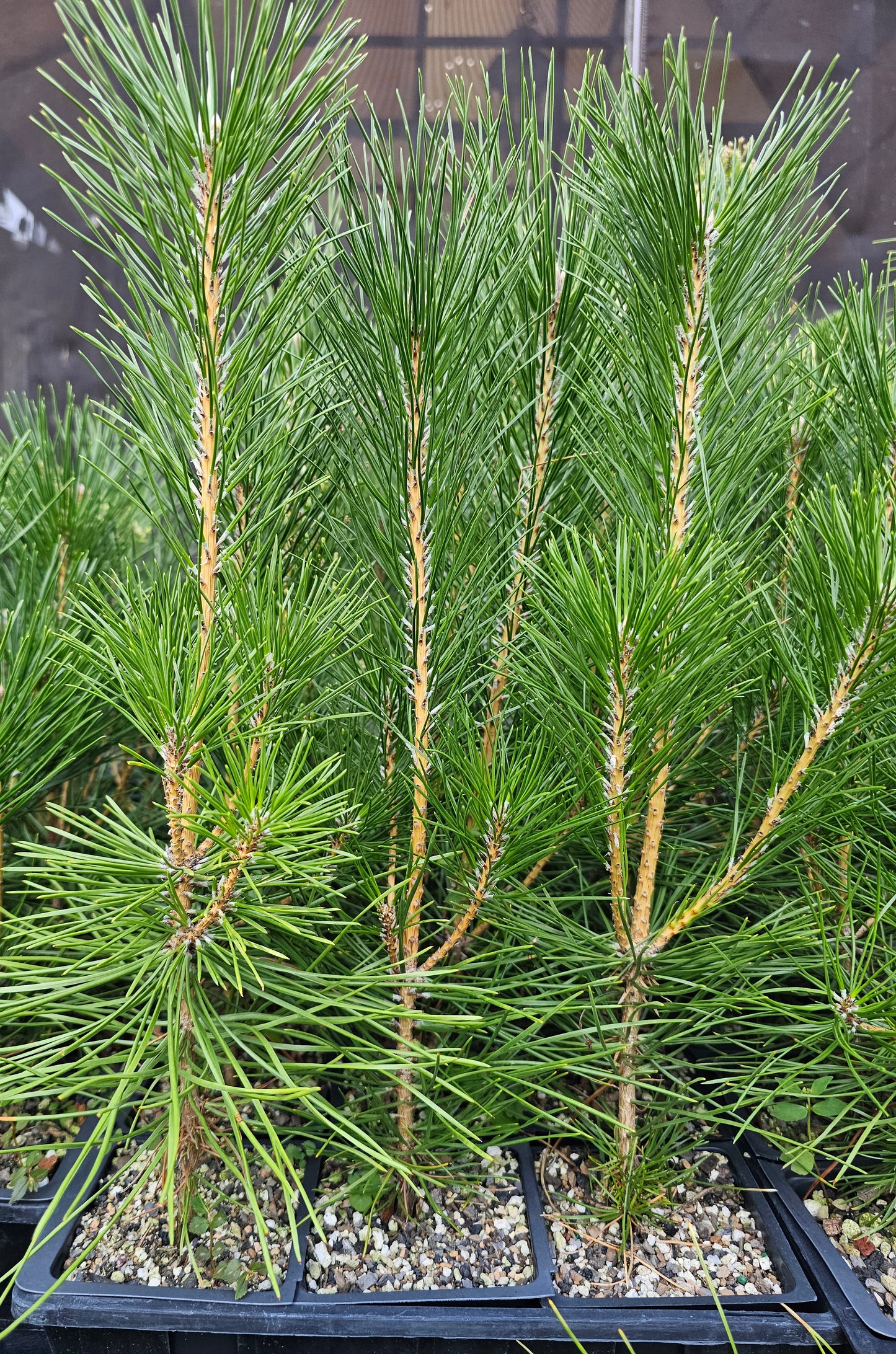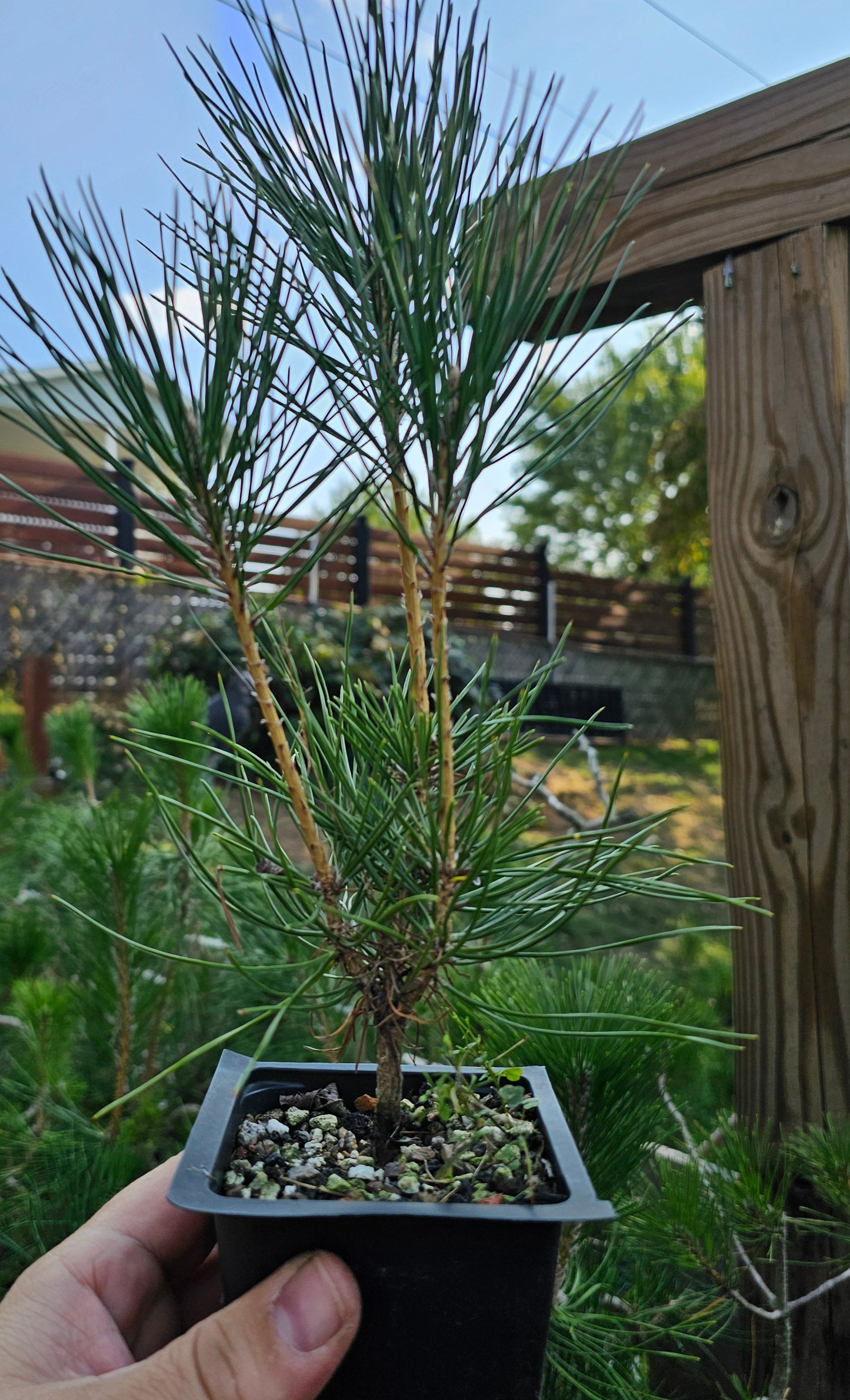Japanese Black Pine Bonsai Tree Seeds (Pinus Thunbergii) Kuromatsu
Japanese Black Pine Bonsai Tree Seeds (Pinus Thunbergii) Kuromatsu
Couldn't load pickup availability
The Japanese Black Pine (Pinus Thunbergii), also known as Kuromatsu in Japan is a staple of bonsai throughout the world. The JBP is a two needle, two flush pine. The JBP is one of only a few two flush pines which make it an extremely strong pine. It's strength is why it can flush twice in a single season. Once understood, the decandling process can produce very small needles and ramification fairly quickly.
USDA Zone: 5-9 (Most of the United States)
Germinating Difficulty: Easy
This tree grows at a moderate rate at 12" - 18" per year in a pot (could be up to 4' and down to a few inches). The seeds are easy to germinate. They will require a 24 hour water soak, starting out as warm/hot water. Seeds that float should be discarded after the 24 hours and the water drained. The remaining seeds should be planted in a seed starting medium such as pearlite (garden soil will also work), planted 1/8" to 1/4" deep. Tamp the soil after sowing. The soil MUST be kept damp (never dry and not often soaked) and warm for the seeds to germinate which usually happens in 10 - 20 days in 70-80 degree F temps. A seed germination heat mat will help improve germination speed and rates.
Seeds should be used as soon as possible. Seeds that will not be used immediately should be stored dry in the plastic bag in the refrigerator or freezer. The quality of the seeds will degrade over time, normally 3-20 years. I have a friend and professional bonsai grower that stores his black pine seeds in his freezer. He has been using the same bags of seeds for 17 years and they still germinate at the same rate they did when he purchased them.
Seeds are sourced from the most reputable commercial seed sources. These are the same seeds we use to start our bonsai.
We can not guarantee that your seeds will germinate as there are many factors involved. Our instructions are exactly how we grow black pine by the thousands. In general, black pine are pretty easy. Perhaps do a test run with 5 seeds to be sure you have the process correct. After you successfully germinated some of the seeds you can proceed with a larger batch.
Here are more detailed instructions. Please note that there are variations to this method that may also work. This is the exact method step by step.
Japanese Black Pine - Pinus Thunbergii Germination Instructions
The best time to begin germination of black pine is in the late winter or early spring. This time of year gives you the chance to plant your seeds and grow them indoors until it is warm enough outside for the seedlings. You will then have the entire growing season for the seedlings to strengthen and grow.
Please Note: Not all seeds will germinate, this is normal. Normal germination rates should be around 85% if cared for properly for the black pine seeds we sell.
1. Prepare a container of warm-hot water (sink hot, not boiling). I usually use a cup of some sort to soak the seeds in.
2. Place seeds you wish to germinate in the hot water and leave sit at room temperature for about 24 hours.
3. You will find that some seeds are floating and some sinking. Pour off or spoon off all floating seeds/debris and dispose of.
4. The remaining seeds that sank are good seeds and most should germinate when cared for properly.
5. Prepare a tray, large pot or individual pots for the seeds. They can be grown in anything that has drain holes and holds soil.
6. Fill your container with soil (at least 3" deep). Many soils will work (garden soil, bonsai soil, pumice, pearlite, etc). We have tried them all and they all work. We usually use a mix of 60% cocoa coir and 40% course pearlite.
7. Place your seeds on the surface of the soil, being sure to leave space between seeds so they have room to grow. In bulk, we just spread them evenly across nursery trays.
8. Cover your seeds/soil with a layer of fine soil (not large chunks) about 3/16" thick. Sand or clean garden soil with small particles is great.
9. Lightly tamp (press down or compact) the soil.
10. Water the soil using a gentle spray until water begins to exit the drain holes in your container (try not to disturb the surface soil or seeds)
11. Once the water is no longer dripping from the bottom holes, place your container with the seeds in a bright warm location (70 - 80 degrees F)
12. Check the container daily and make sure the soil remains moist. If the soil dries out, the seeds/seedlings will likely die.
13. Within a few weeks (@ 14 days) you should see some of the pines begin to sprout. Pinch off any that you don't wish to keep. If there are 2 growing very close together, it is best to remove seedlings until only one remains so they can grow strong.
14. I like to keep the seedlings in their original pot or tray until the following spring (after frost risk passed). They then can be planted to individual pots as necessary. Some people transplant after the 2nd set of needles appear.
15. Use a reputable website to follow care instructions for black pine. For the first year, be sure to water before the soil dries completely. Black pine like a lot of water, but they do not like to sit in soaked soil.
Please Note: Animals LOVE black pine seeds. Protect your seeds/seedlings. Birds, especially chickens will decimate freshly planted pine seeds. Hardware cloth is a common way to protect them.
Share










